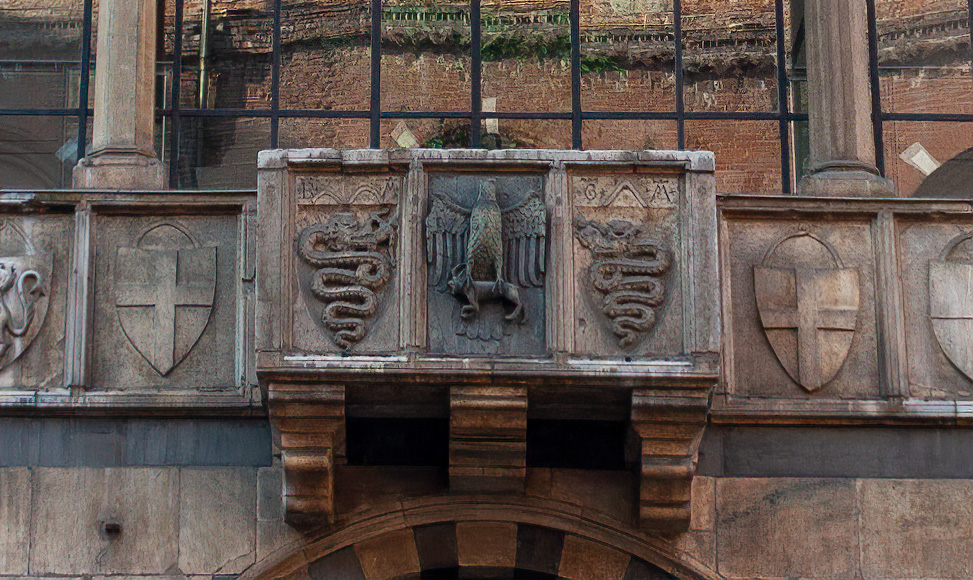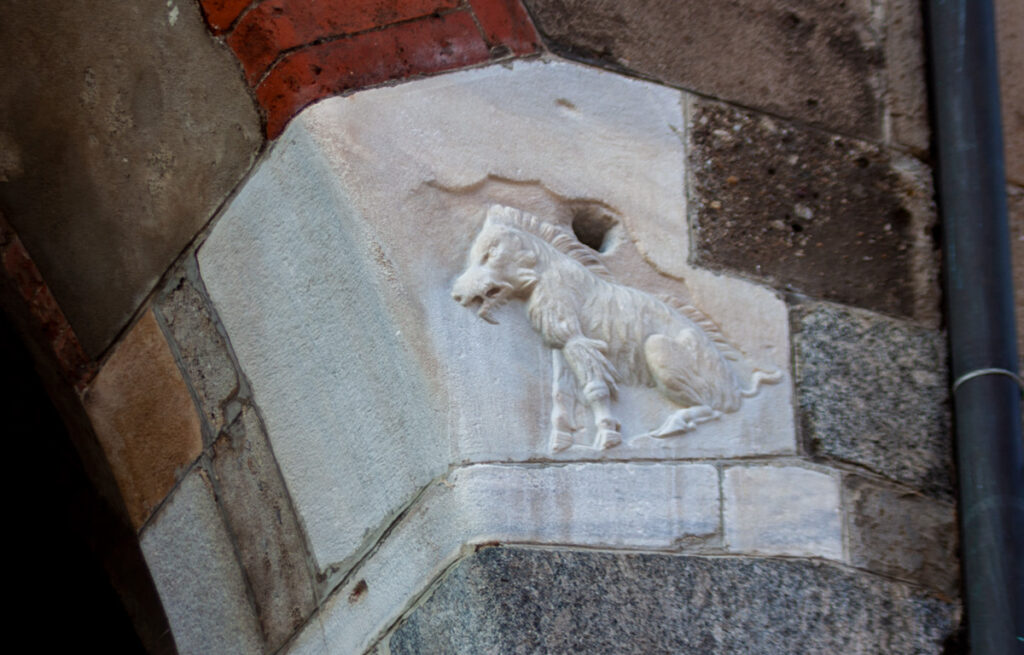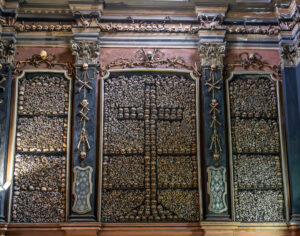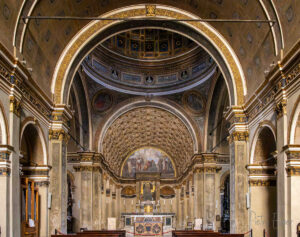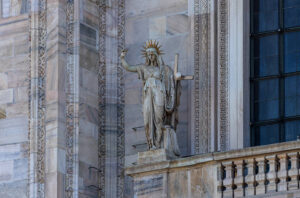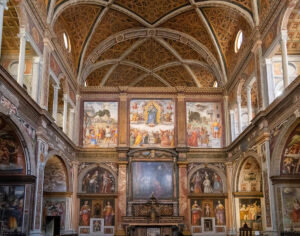La scrofa semilanuta
Sulla facciata opposta del palazzo della Ragione a Milano si trova un piccolo bassorilievo raffigurante una scrofa semilanuta.
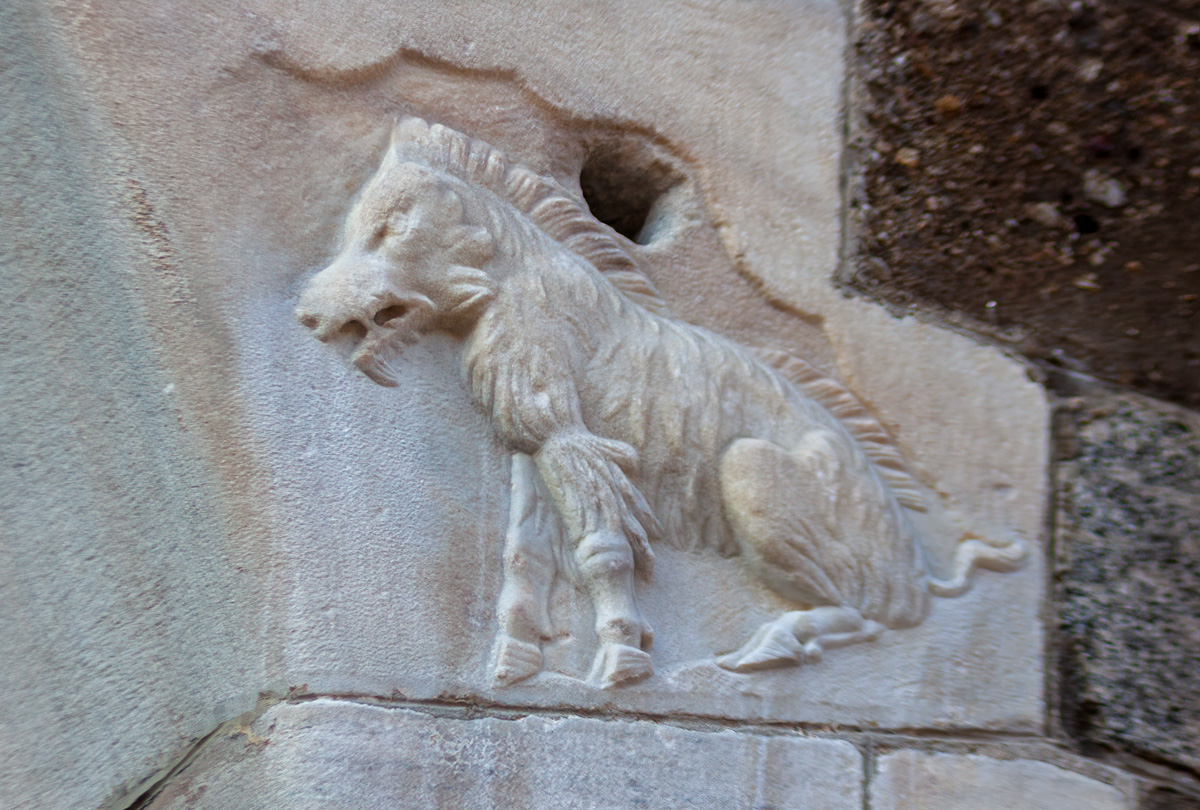
Secondo una tradizione il fondatore di Milano fu Belloveso, che attraversò le Alpi e arrivò nella pianura padana. Giunse nel luogo che gli fu indicato in sogno da una dea e vide una scrofa di cinghiale con il pelo molto lungo nella parte anteriore del corpo. Quindi decise di fondare in questo luogo la città di Milano, che secondo questa tradizione prese il nome medio-lanum, ovvero semi-lanuta.
Nella parte opposta della piazza si vede un’aquila che stringe la scrofa
